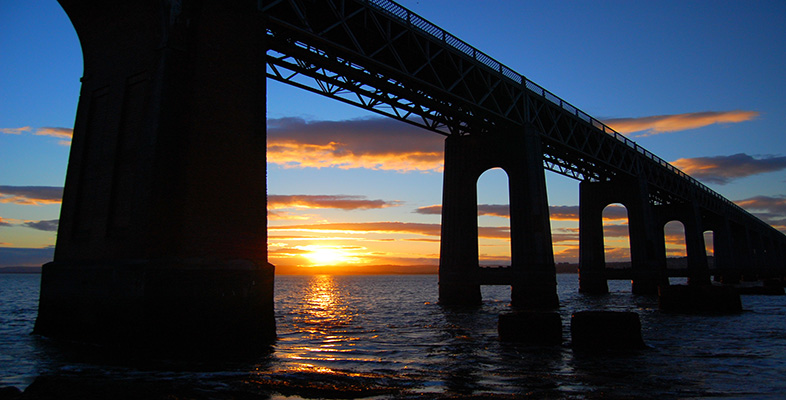4 Investigation into the Tay Bridge disaster
4.1 Condition of the bridge: an overview
An investigation was put into motion by the Board of Trade (BoT) as soon as news of the catastrophe reached London. Three commissioners were appointed to consider the evidence. They proceeded at their task with haste, knowing the country looked to them for an explanation of the accident.
Fifty photographs were taken of the remains of the bridge about a week after the collapse at the request of the BoT enquiry team.
The photographs are vital evidence of the way the bridge piers failed, and are remarkable for their high quality. Details are seen in focus both in the foreground and the background, indicating the pictures were taken with a small aperture on a large glass plate.
The photographer appointed by the commissioners was a local firm, Valentines of Dundee – later to become famous for its picture postcards. The pictures were recorded on large silver emulsion plates (6 × 4 inches) using long exposure times. The plates had very small and well-distributed silver chloride particles so that detail was recorded, detail that was transferred to the positive print made from the negative. As the resolution of the print was also high, it means a substantial amount of that detail is in the pictures, and which can apparently only be revealed by using a microscope directly on the prints.
Owing to their age and rarity (the BoT set kept by Dundee City Library may be the last complete set still extant), new computer technology has been used to scan the prints optically, and store the digitised images on compact disc. The memory needed to store digitised images is prodigious, and a large picture at a resolution of 600 dots per inch needs more than 40 megabytes.
Once digitised, the images can be enhanced in several ways. For example, the original prints show little contrast, but it can be increased in the digitised image easily by changing the grey scale of the pixels that are used to store the images on the computer. High contrast means specific details can be seen more clearly by the investigator against the immediate background. In addition, and provided high resolution scans have been made, the images can be magnified to reveal the hidden detail.
The highest magnification used on the Tay Bridge set is about 10 times the original size, so the virtual microscope is equivalent to a low-power optical instrument typically used to examine fracture surfaces of failed products.
Such digitised images from the BoT collection are shown in Figures 20–27 (Sections 4.2–4.4). A complementary set held in the Valentine collection at the University of St Andrews, Fife, has also been used for this unit.
